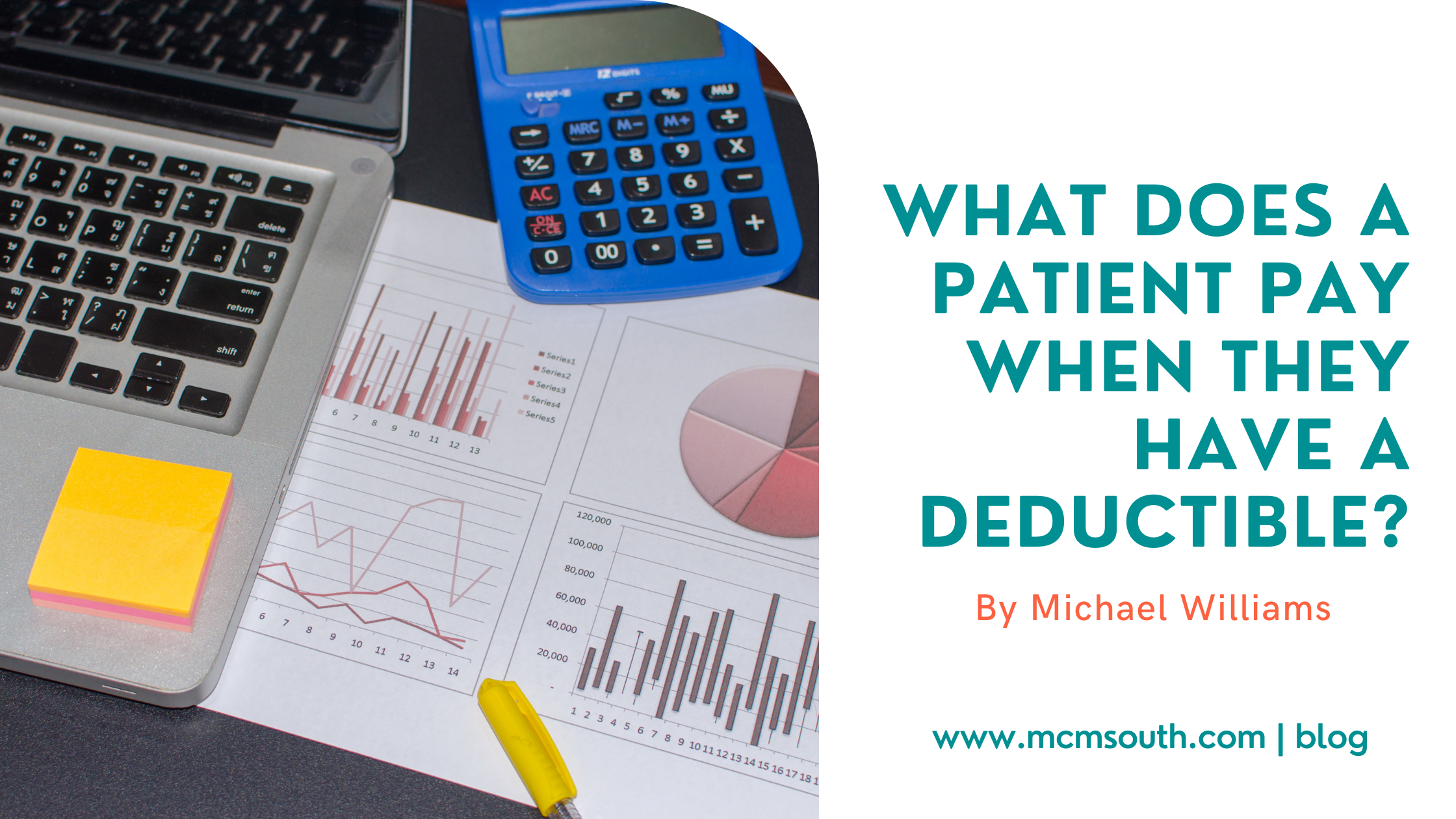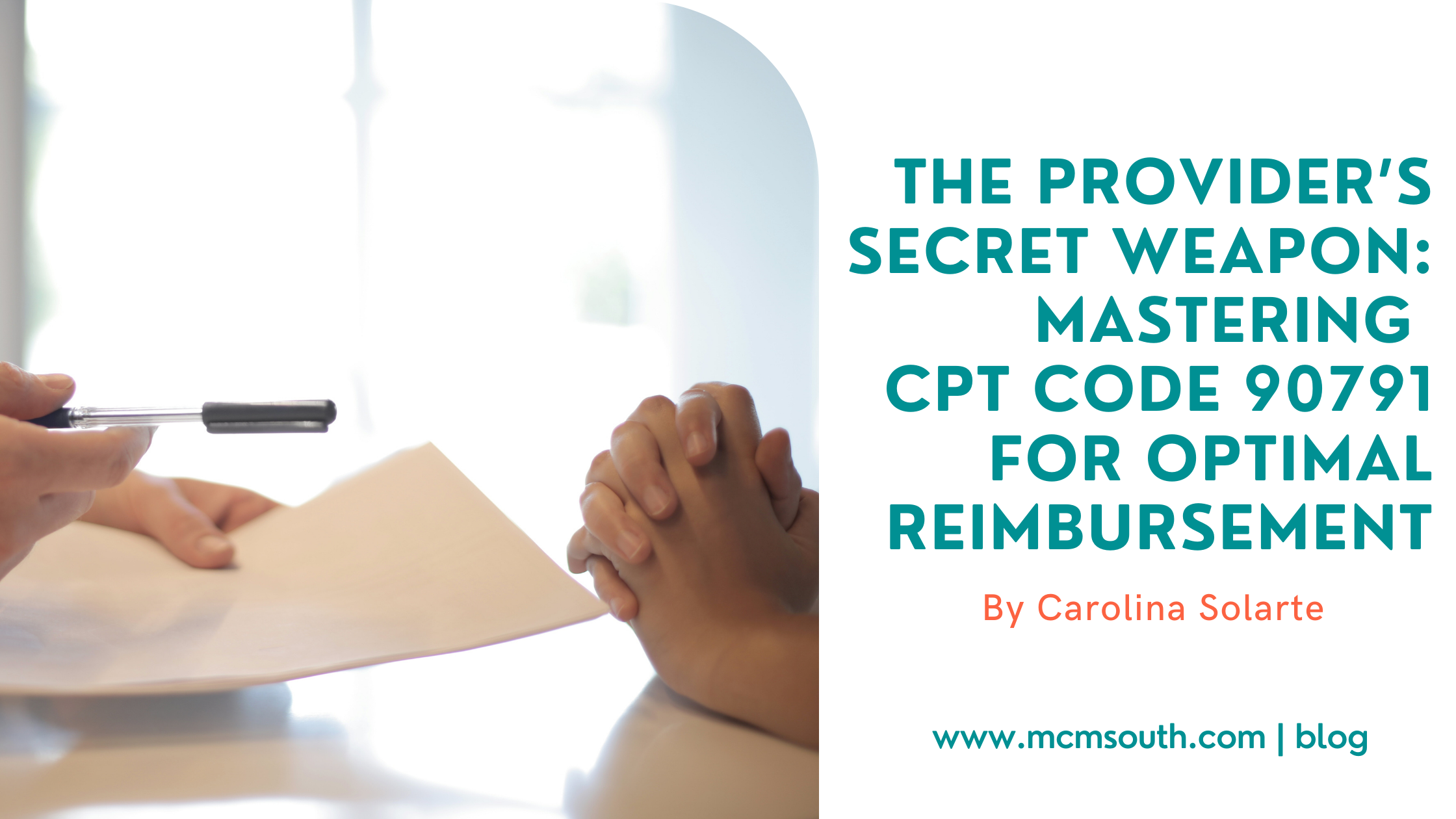
What does a patient pay when they have a Deductible?
Taking the Mystery Out of Deductibles: Best Practices for Providers
When a patient arrives at the (DOS) date of service, the primary question for the patient’s insurance is whether they have a co-payment or deductible. When a patient elects their health insurance coverage, they agree to be responsible to pay out-of-pocket for health care expenses, until the deductible is obtained.
How much does a patient pay when they have a deductible?
- This a two-part answer
- When the patient has not obtained or accumulated enough medical expenses towards their deductible, they are to pay 100% of the “allowed” rate out-of-pocket.
- After the patient has met their deductible, based on the healthcare insurance policy details, it will be different. After reaching the deductible, they may have no out-of-pocket payment, or they may have co-insurance or co-payment. (Verify the Patient Benefits)
How much does insurance pay when the patient has a deductible?
This answer coincides with the patient payment, with a two-part answer.
- When the patient has not obtained or accumulated enough medical expenses towards their deductible, insurance will pay $0.00.
- After the patient has met their deductible, based on the healthcare insurance policy details, it will be different. After reaching the deductible, insurance may pay 100% of the “allowed” rate. Or insurance may pay reimbursement for the remainder of the “allowed” rate after the patient pays the co-insurance or co-payment out-of-pocket. (Verify the Patient Benefits)
When does insurance pay when the patient has a deductible?
When the patient has a deductible, they are to pay out-of-pocket for their healthcare cost, until the deductible is obtained. Depending on the individual healthcare insurance policy, insurance may pay after the deductible is obtained. However, insurance will pay after the patient pays their co-insurance or co-payment.
When does insurance pay 100% when the patient has a deductible?
With most healthcare insurance policies, insurance does not reimburse 100% until the patient has obtained or accumulated enough medical expenses toward their out-of-pocket maximum.
The out-of-pocket maximum is the accumulation, typically after the deductible. An example of a deductible is $3,000. The out-of-pocket maximum (OOP) may be $6,000. The accumulations are the same for the deductible and the out-of-pocket maximum (OOP).
A few policies reimburse 100% after the patient has met their deductible. Please confirm the patient’s benefits by knowing their insurance details.
What’s included in a patient’s deductible?
The deductible is an accumulation of all major medical expenses that are submitted to the insurance company. Each time a patient goes to the doctor has surgery or visits the emergency room, the amount is added to the deductible and out-of-pocket maximum (OOP).
What does verifying the patient’s insurance benefits tell me about their deductible?
When verifying the patient’s insurance benefits, it’s important to know the below information;
- What is the amount of the deductible?
- Is there an individual and/ or family deductible?
- When does the calendar year end for the policy?
- What are the accumulations towards the deductible, on the date the verification is completed?
- After the deductible is reached, does the patient have co-insurance?
- What is the out-of-pocket maximum?
- What are the accumulations toward the out-of-pocket maximum?
What is the amount of the deductible?
When a patient has a deductible, that means they must pay out-of-pocket until the deductible is obtained. The patient is to pay the “allowed” rate for each date of service.
Is there an individual and/ or family deductible?
Often with healthcare insurance, when a patient has a deductible, they will have an individual and family deductible that is applicable.
With a family deductible and individual deductibles that are applicable. This means that each individual must have accumulations for their deductible and the family deductible before the healthcare insurance starts to pay.
When does the calendar year end for the policy?
Most healthcare insurance policies start on January 1st and end on December 31st. Some individual companies have unique calendar years for their operations and healthcare insurance. For example, June 1st through May 31st.
The calendar year allows for all medical expenses to accumulate during this time. However, at the start of the new calendar year (if) the patient keeps the same insurance for the new year, the deductible will “reset” to zero ($0.00) at the start of the new year.
What does the Provider collect directly from the patient?
- Example
- 90834 has an “allowed” rate of $100
Co-Insurance of 25%
- When the patient has not obtained their deductible
- The patient will pay out-of-pocket $100
- The patient has obtained their deductible
- With coinsurance of 25%, the patient will pay out-of-pocket $25.00
- The patient has obtained their out-of-pocket maximum
- The patient will pay 0.00
How much does insurance pay as reimbursement?
- Example
- 90834 has an “allowed” rate of $100
co-insurance of 25%
- When the patient has not obtained their deductible
- The insurance will pay $0.00
- The patient has obtained their deductible
- With co-insurance of 25%, insurance will pay the remainder of $75.00
- The patient has obtained their out-of-pocket maximum
- Insurance will pay $100.00
Do the “deductible” accumulations matter whether the provider is Credentialed with insurance?
Yes, many insurance policies have separate accumulations based on the network status of the rendering provider. This means, there is an in-network accumulation separate from the out-of-network accumulations.
Each policy treats them differently, as many will keep them separate. While a few policies will combine the two in-network and out-of-network deductible accumulations to determine when a patient will stop paying for healthcare insurance and insurance will start reimbursement.
Does the “Allowed” rate apply if the provider is credentialed with insurance
Yes, when a provider completes all the paperwork to be credentialed or paneled with an insurance company, they agree to charge the insurance company members the agreed-upon rate for their geographical area.
Does the “Allowed” rate apply if the provider is non-credentialed with insurance
Yes, as non-credentialed providers, insurance will apply a maximum that will allow for each service code submitted to insurance. If the provider does not submit the insurance claims, the “allowed” amount is not applicable. The patient will be subject to the provider’s bill rate at the time of service.
Patient responsibility for out-of-pocket
- Co-payment – Select to see the blog page – see blog
- See YouTube video in Spanish “Copago”
- Deductible – Select to see the blog page – see blog
- See YouTube video in Spanish – Cuando su paciente tiene un “Deducible”
- Co-insurance – Select to see the blog page
- See YouTube video in Spanish- Cuando su paciente tiene un “Co-seguro”
- Coordination of Benefits – Select to see the blog page
- See YouTube video in Spanish “Coordination de Beneficios”
- Out-of-pocket maximum – Select to see the blog page
Provider Reimbursement
- Verifying the patient’s insurance benefits – Select to see the blog page
- Credentialed or paneled with insurance
- Non-Credentialed or non-paneled with insurance
- “Allowed” amount or “Allowed” rate with insurance- Select to see the blog page
- See YouTube video in Spanish “Tarifa Permitida”
- When my patient has a deductible, what do I collect from the patient?
Billing services available in all U.S cities
Mental Health billing services near Atlanta, Georgia
Mental Health billing services near Alpharetta, Georgia
Mental Health billing services near Amarillo, Texas
Mental Health billing services near Athens, Georgia
Mental Health billing services near Austin, Texas
Mental Health billing services near Brookhaven, Georgia
Mental Health billing services near Boston, Massachusetts
Mental Health billing services near Charlotte, North Carolina
Mental Health billing services near Dallas, Texas
Mental Health billing services near Dunwoody, Georgia
Mental Health billing services near Houston, Texas
Mental Health billing services near Jacksonville, Florida
Mental Health billing services near Kennesaw, Georgia
Mental Health billing services near Miami, Florida
Mental Health billing services near Nashville, Tenessee
Mental Health billing services near Orlando, Florida
Mental Health billing services near Peachtree City, Georgia
Mental Health billing services near Sandy Springs, Georgia
Mental Health billing services near Tampa, Florida



